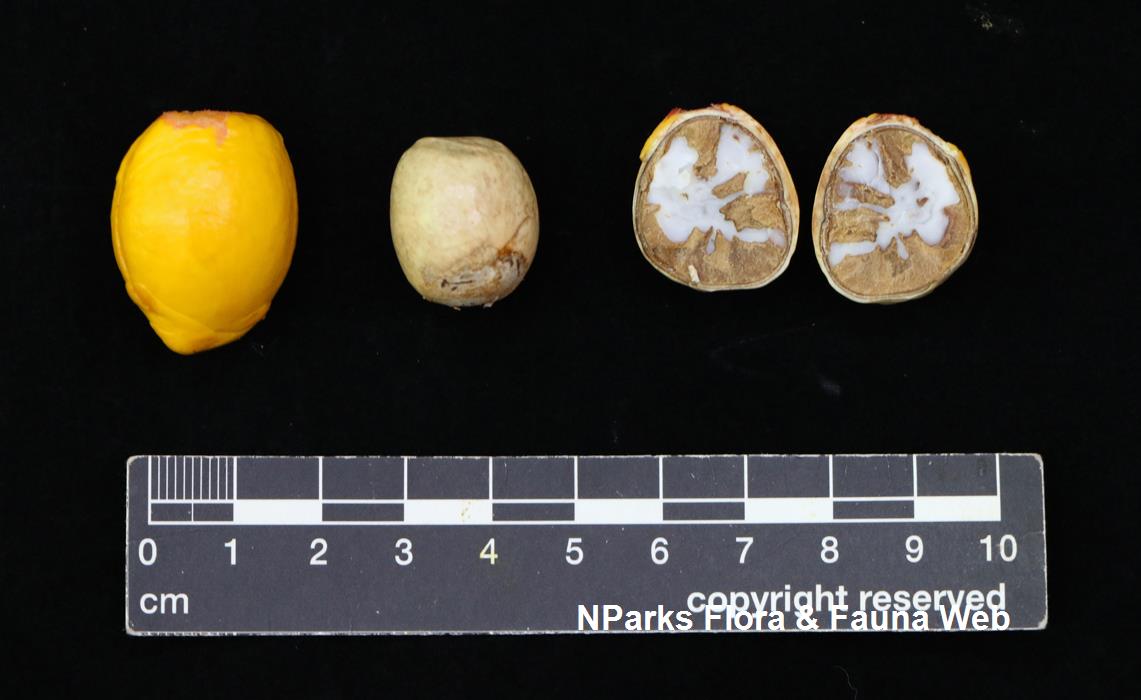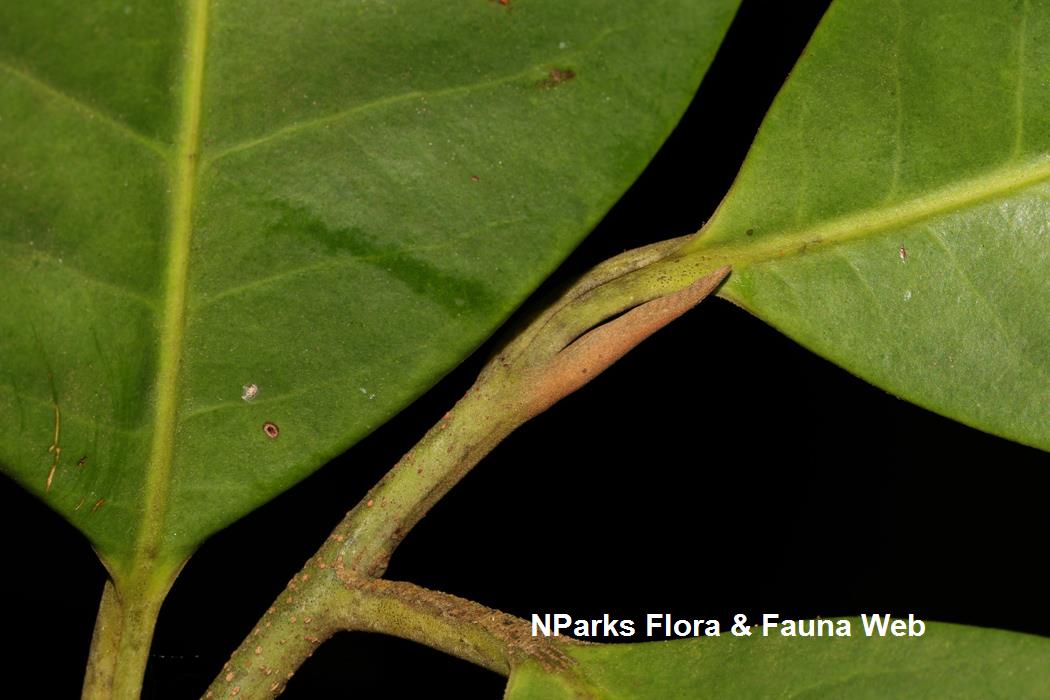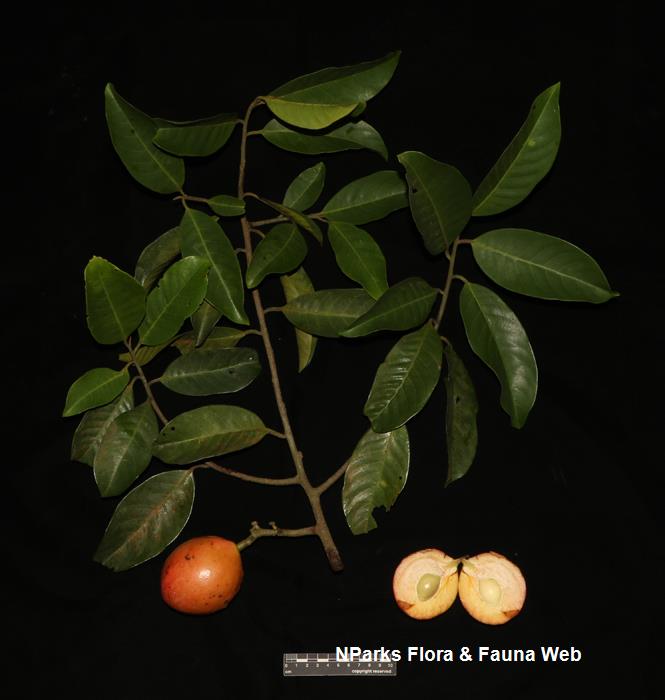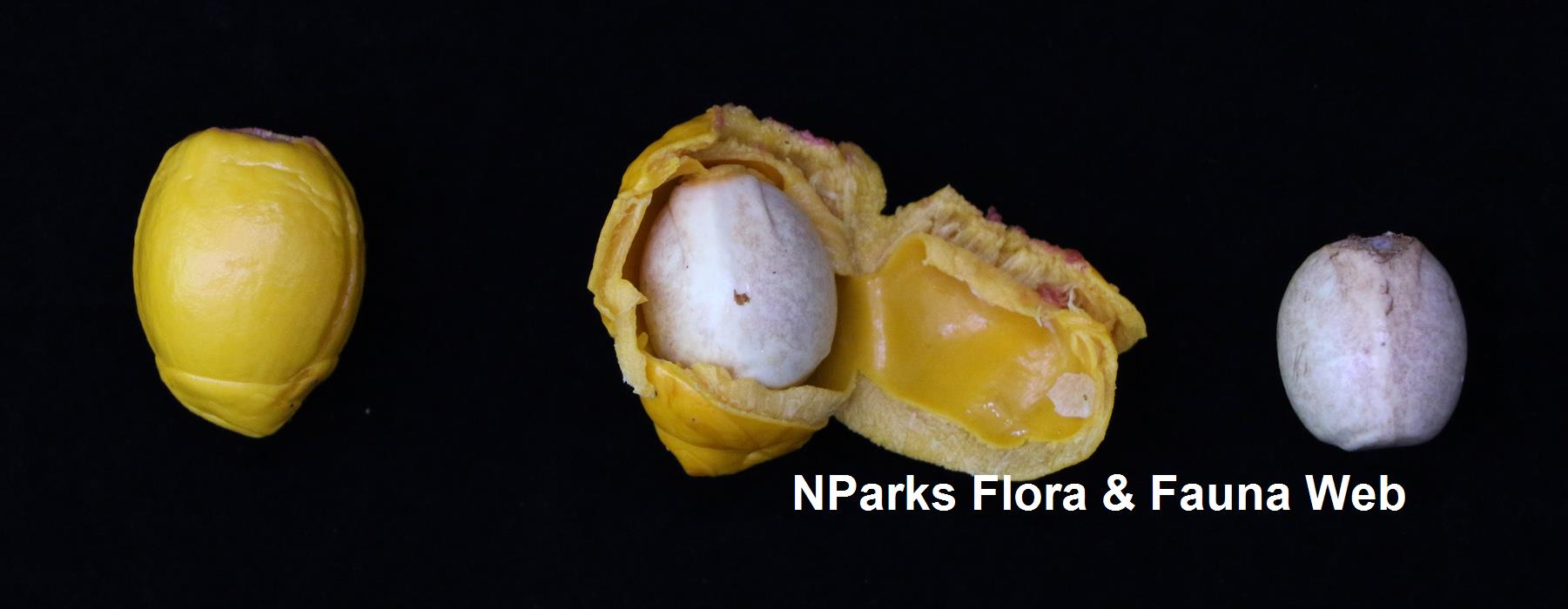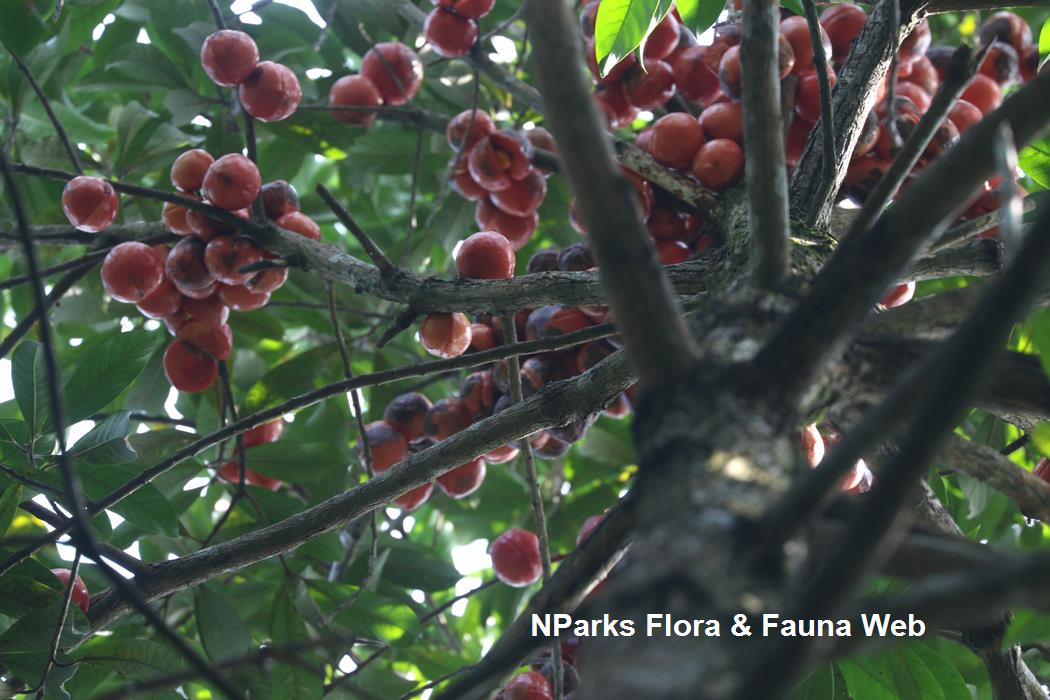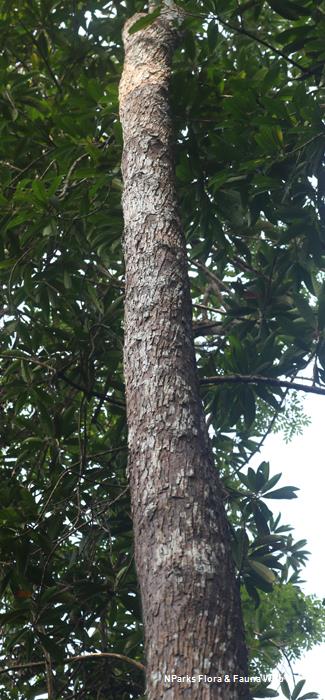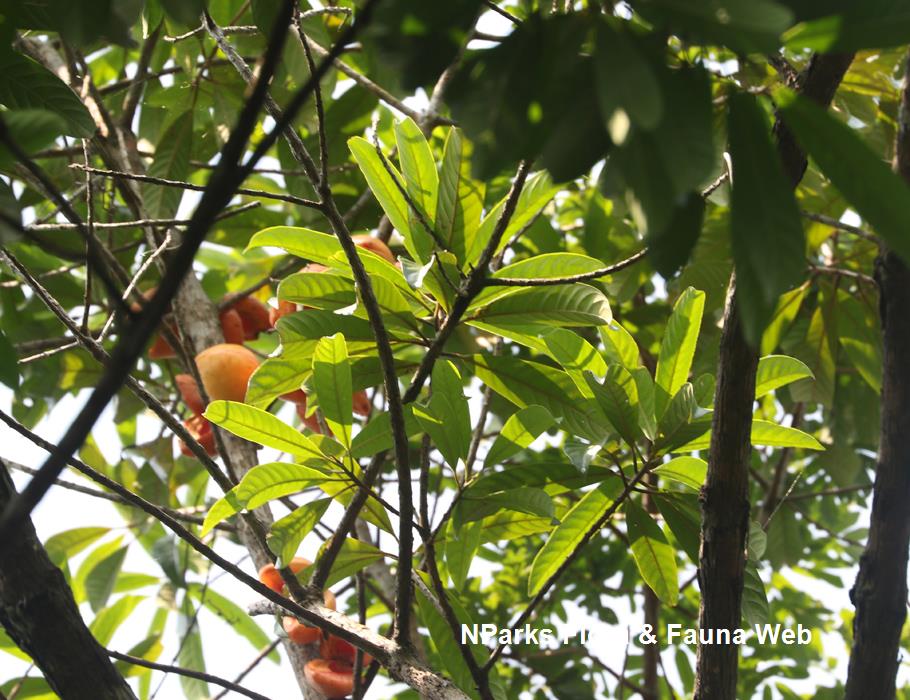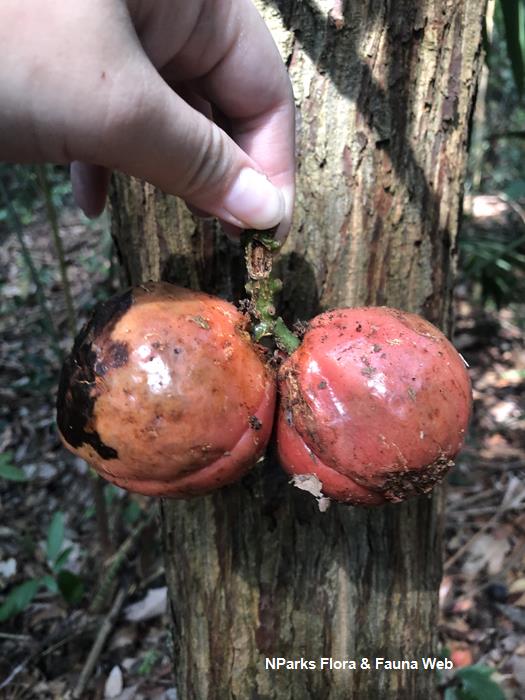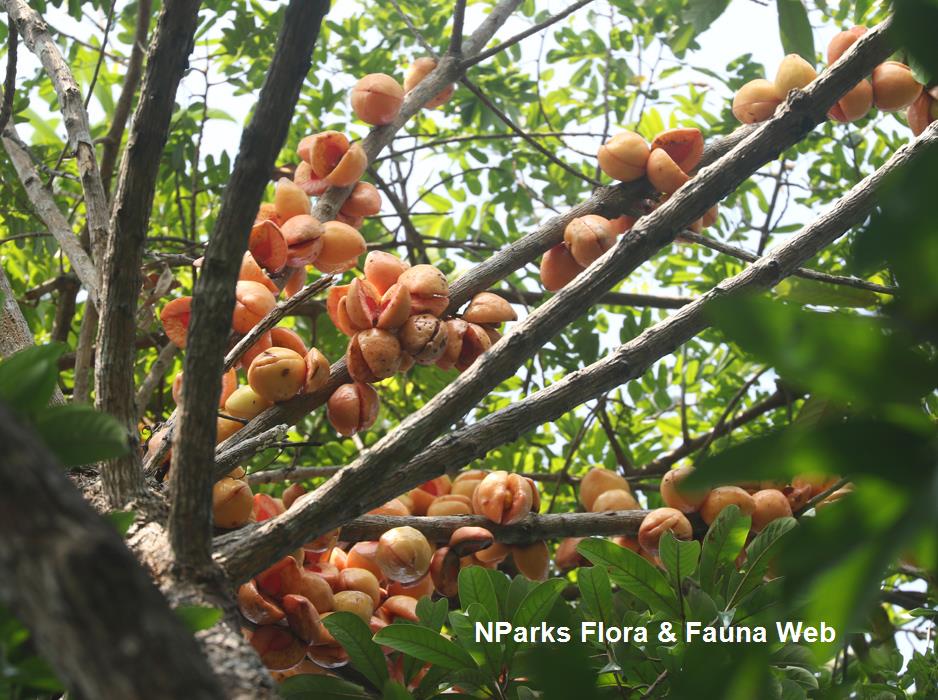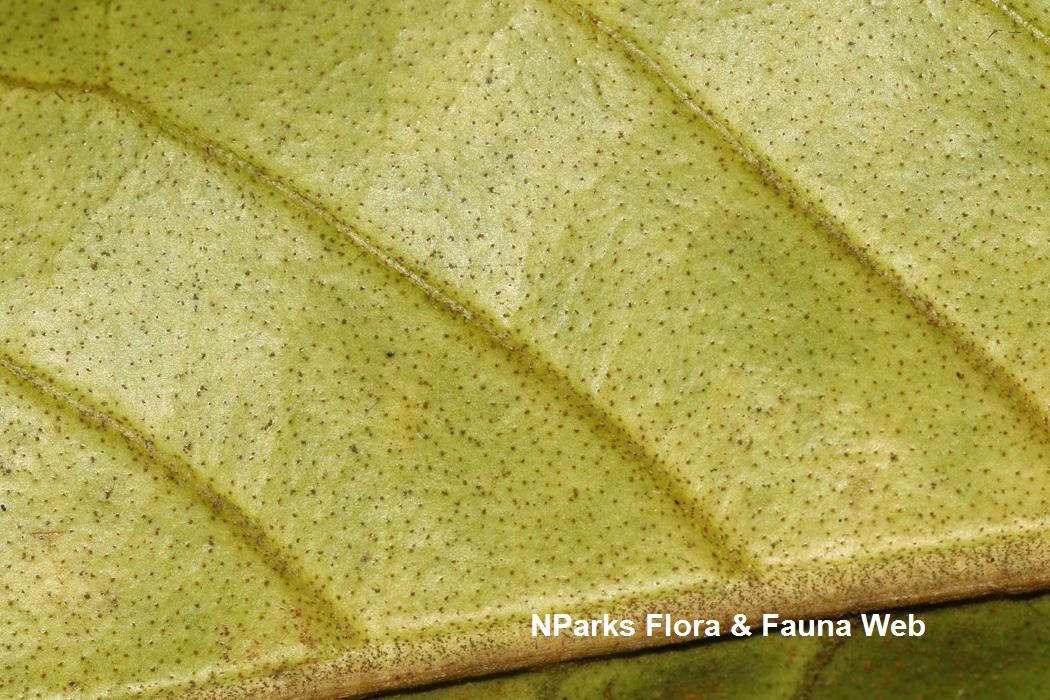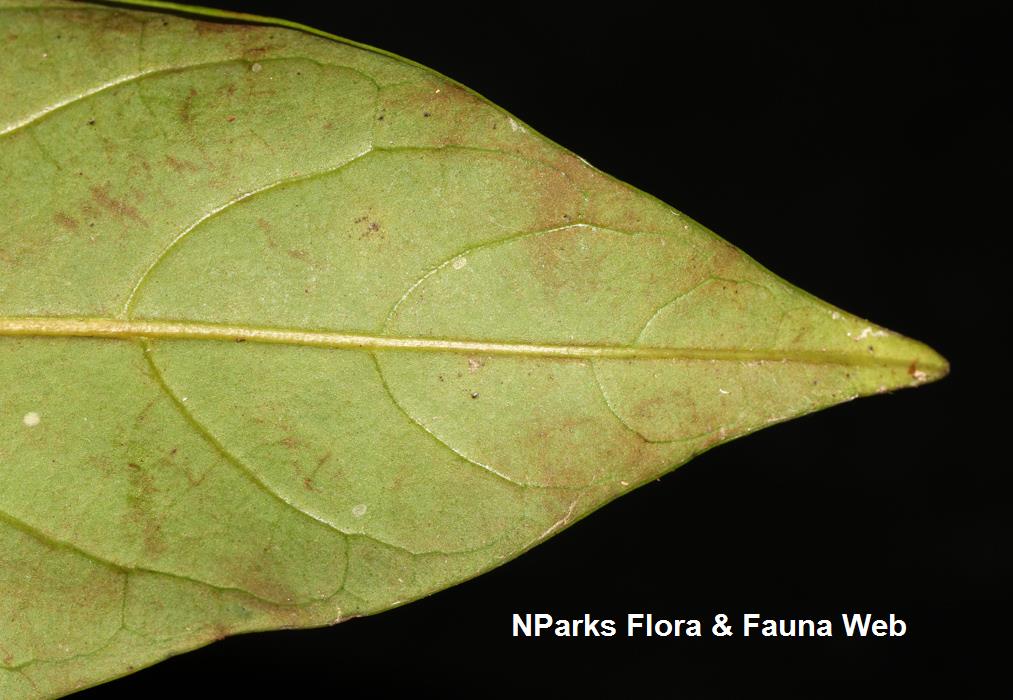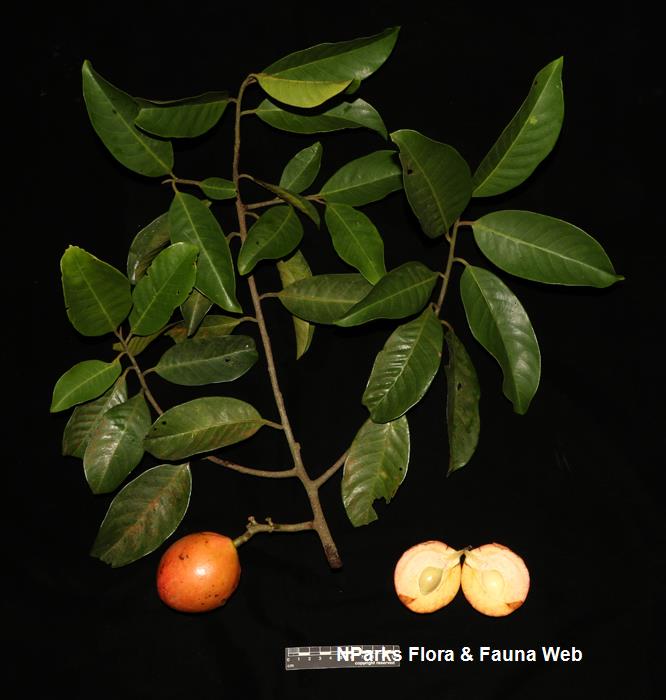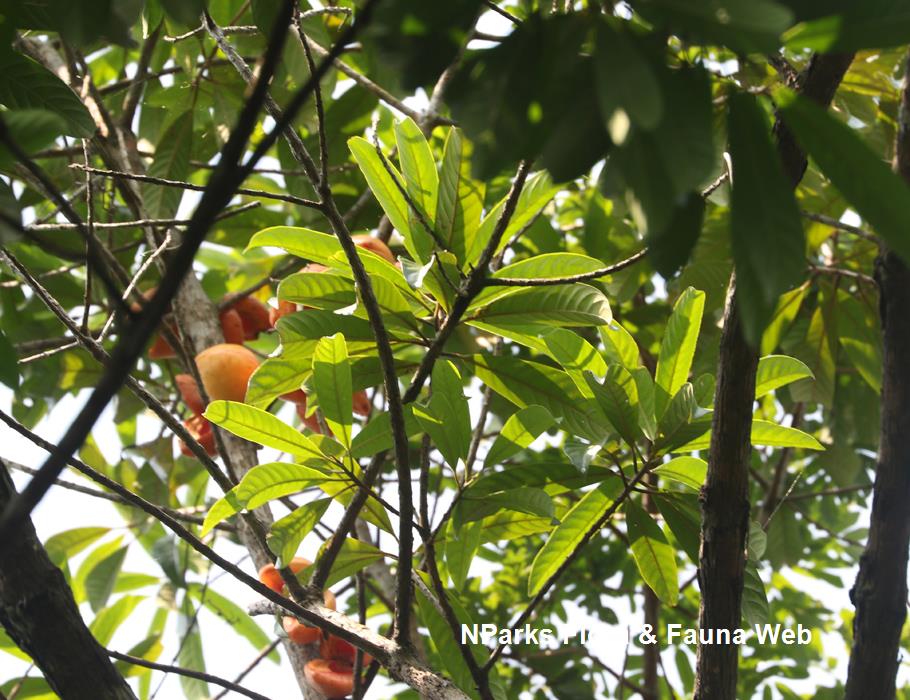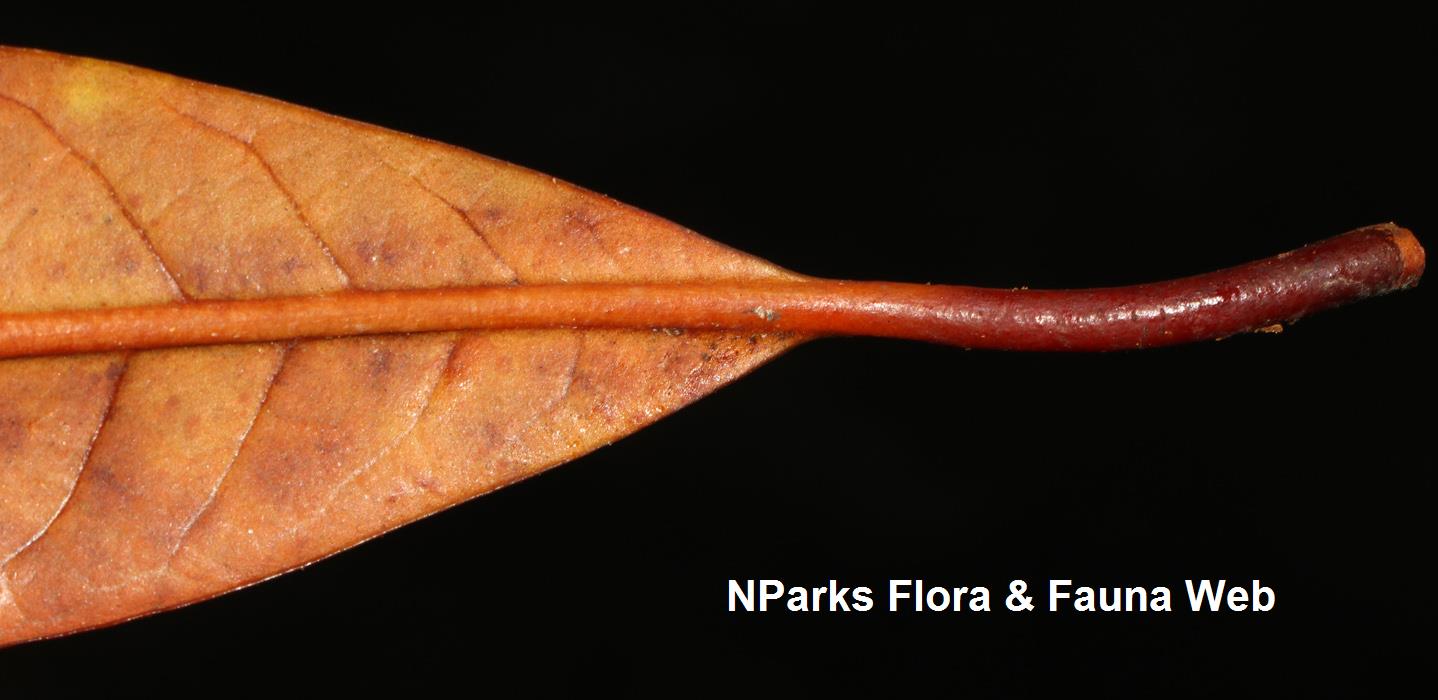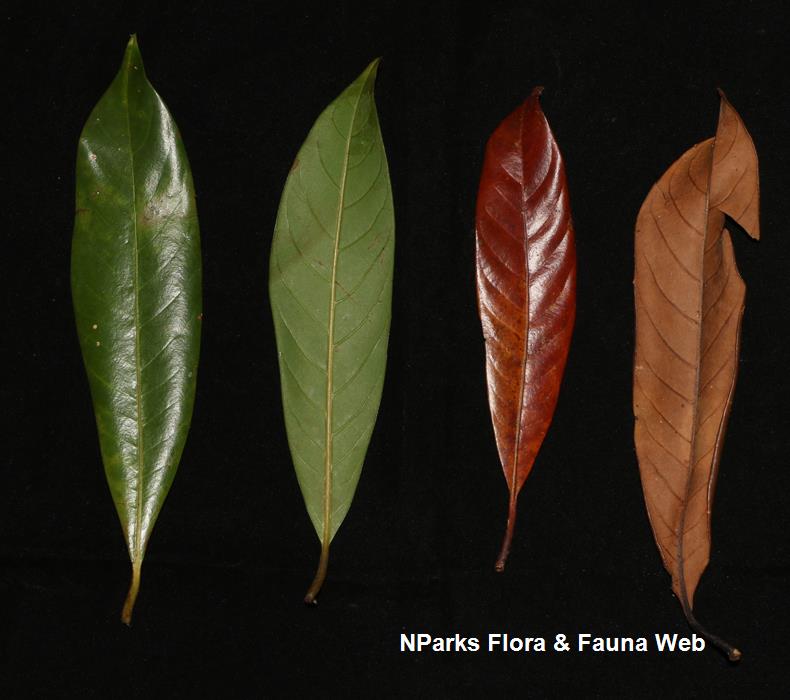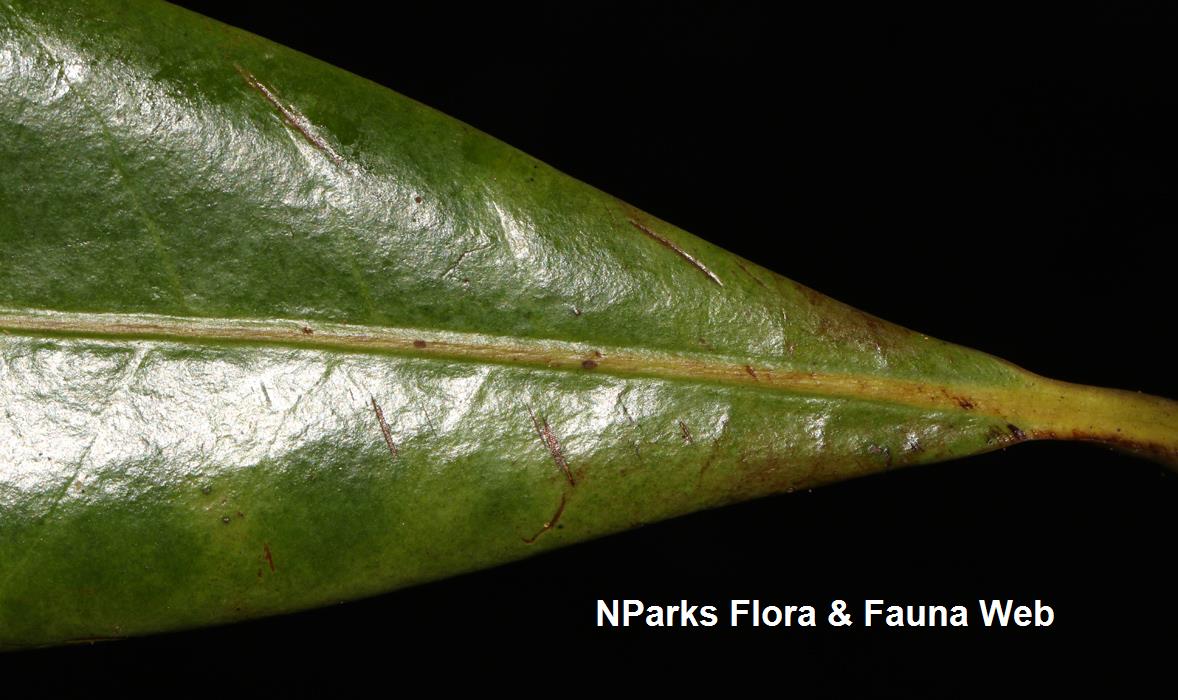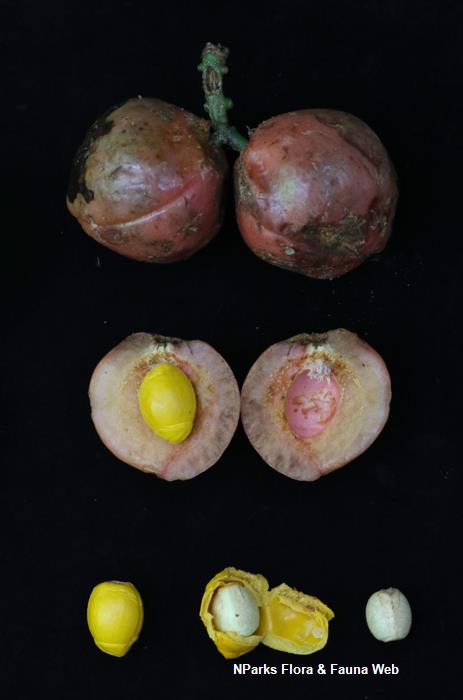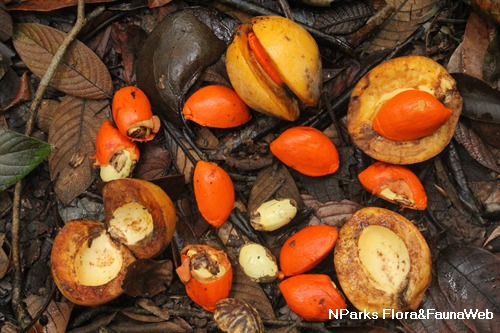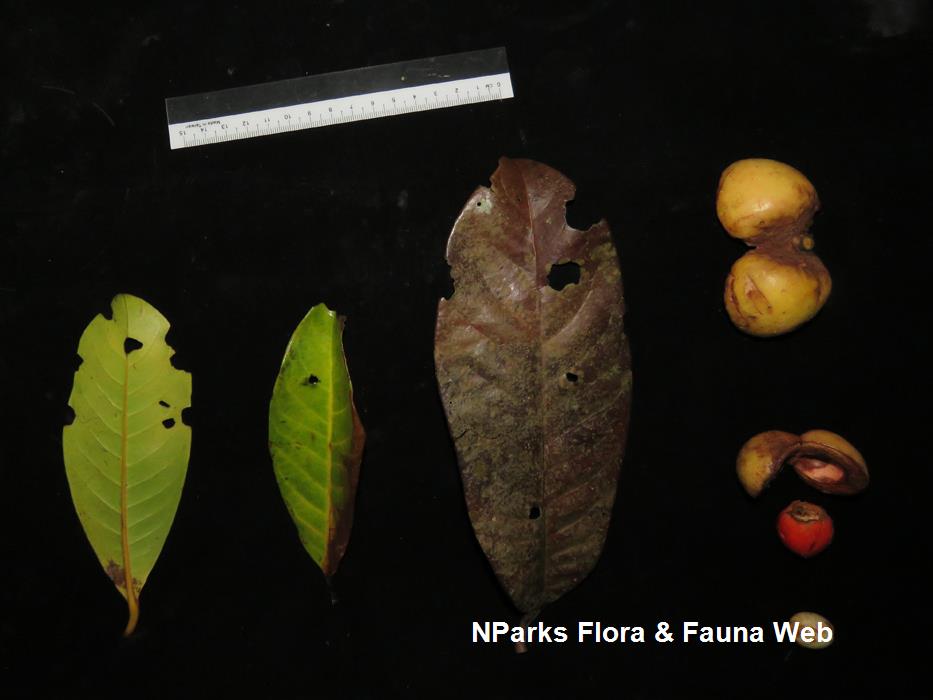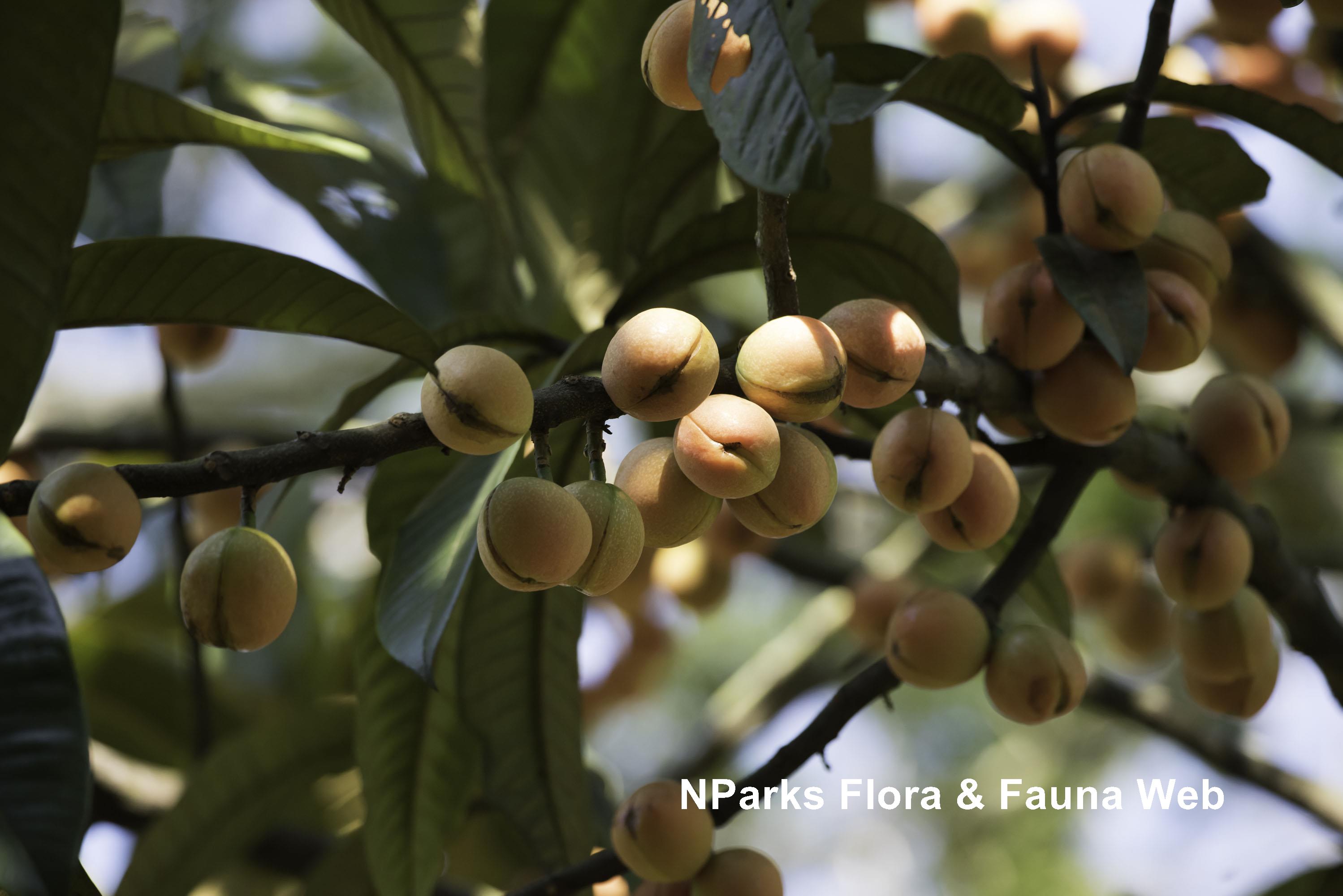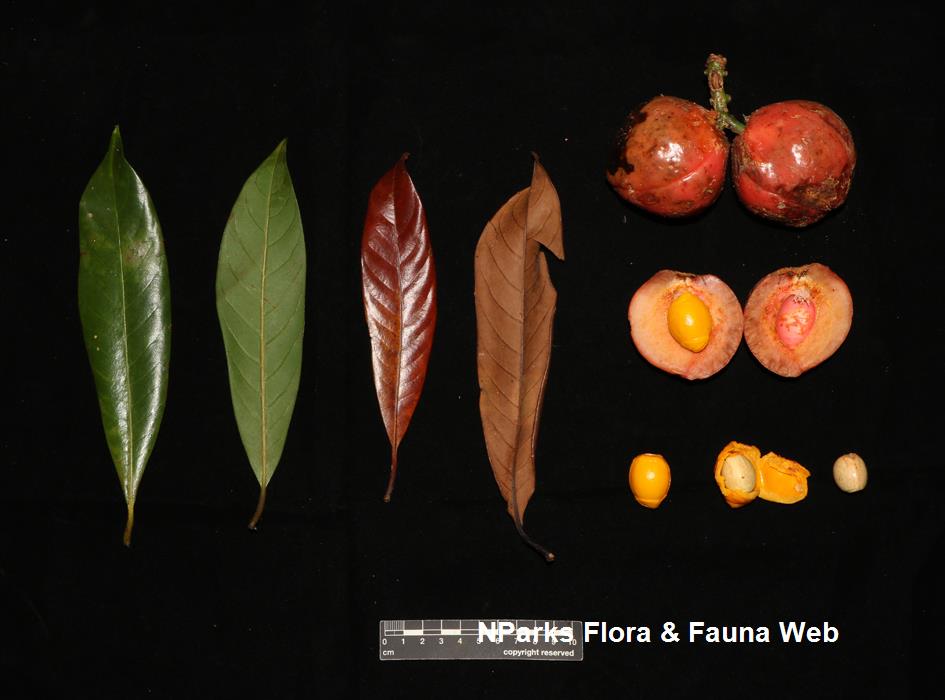
Back
Horsfieldia sparsa W.J.de Wilde
| Family Name: | Myristicaceae |
| Synonyms: | Horsfieldia sucosa auct. non (King) Warb. |
| Common Name: | Penarahan Gajah, Samak Pulut |
Name
Classifications and Characteristics
| Plant Division | Angiosperms (Flowering Seed Plants) |
|---|---|
| Plant Growth Form | Tree (Medium (16m-30m)) |
| Lifespan (in Singapore) | Perennial |
| Mode of Nutrition | Autotrophic |
| Plant Shape | Irregular |
| Maximum Height | 30 m |
Biogeography
| Native Distribution | Sumatra, Peninsular Malaysia, Singapore, and Borneo |
|---|---|
| Native Habitat | Terrestrial (Primary Rainforest, Secondary Rainforest, Freshwater Swamp Forest) |
| Preferred Climate Zone | Tropical |
| Local Conservation Status | Native to Singapore (Endangered (EN)) |
Description and Ethnobotany
| Growth Form | It is a tree that can grow up to 30 m tall. |
|---|---|
| Foliage | Its spirally arranged, stalked leaves possess membranous to thinly papery leaf blades that are oval-oblong to lance-shaped, hairless above, and 13–28 by 3.8–8.5 cm, with scattered tiny black dots below. |
| Flowers | The species is dioecious with individual trees producing either male or female flowers. Its flowering shoots (inflorescences) develop behind the leaves on twigs, and are covered with hairs 0.1–0.2 mm long. Its male inflorescence is 7–19 by 5–16 cm, and flowers are in clusters of 3–7. Its female inflorescence is 1–4 cm long. Male or female flowers are yellow, tiny and the male flowers are smaller than the female flowers. |
| Fruit | Its fruiting clusters (infructescences) contain 1–4 fruits each. Its succulent fruits are broadly egg-shaped, hairless, pinkish-red, shiny, 2–7.6 by 2–5 cm. |
| Habitat | It grows in lowland and hill forests, forests over limestone, swamp forests, and on plains, up to 800 m altitude. It occurs locally in Central Catchment Nature Reserve (Nee Soon Swamp Forest), and Singapore Botanic Gardens (Headquarters). |
| Associated Fauna | Its flowers are insect-pollinated. Its fruits are eaten by hornbills. |
| Cultivation | It can be propagated by seed. |
| Etymology | The genus 'Horsfieldia' is named after Dr. Thomas Horsfield (1773–1859), an American botanist who explored the Malesian islands. |
| Ethnobotanical Uses | Timber & Products: Its wood is used to make house-posts and beams. Others: Its bark is used in tanning. |
Landscaping Features
| Landscaping | It is suitable for parks and streetscapes. |
|---|---|
| Desirable Plant Features | Ornamental Fruits |
| Landscape Uses | General, Suitable for Roadsides, Parks & Gardens |
Fauna, Pollination and Dispersal
| Fauna Pollination Dispersal Associated Fauna | Bird-Attracting |
|---|---|
| Pollination Method(s) | Biotic (Fauna) |
| Seed or Spore Dispersal | Biotic (Fauna) |
Plant Care and Propagation
| Light Preference | Full Sun |
|---|---|
| Water Preference | Moderate Water |
| Plant Growth Rate | Moderate |
| Rootzone Tolerance | Moist Soils, Waterlogged Soils, Well-Drained Soils, Fertile Loamy Soils |
| Maintenance Requirements | Moderate |
| Propagation Method | Seed |
Foliar
| Mature Foliage Colour(s) | Green |
|---|---|
| Leaf Area Index (LAI) for Green Plot Ratio | 3.0 (Tree - Intermediate Canopy) |
Non - Foliar and Storage
| Branch Angle (wrt vertical) | Horizontal |
|---|---|
| Trunk Type (Non Palm) | Woody |
Floral (Angiosperm)
| Flower & Plant Sexuality | Unisexual Flowers , Dioecious |
| Flower Colour(s) | Yellow / Golden |
|---|
| Flower Grouping | Cluster / Inflorescence |
| Flower Location | Axillary |
| Flower Symmetry | Radial |
Fruit, Seed and Spore
| Mature Fruit Colour(s) | Pink, Red |
|---|---|
| Fruit Classification | Simple Fruit |
| Fruit Type | Dehiscent Dry Fruit , Capsule |
Image Repository
Others
| Master ID | 1672 |
|---|---|
| Species ID | 2965 |
| Flora Disclaimer | The information in this website has been compiled from reliable sources, such as reference works on medicinal plants. It is not a substitute for medical advice or treatment and NParks does not purport to provide any medical advice. Readers should always consult his/her physician before using or consuming a plant for medicinal purposes. |

